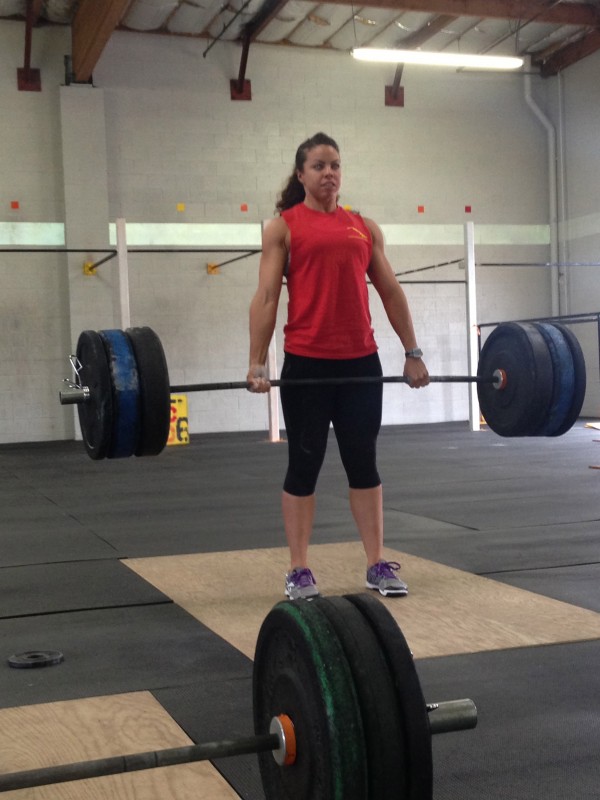The Power of Deep Breathing
Breathing is pretty much the basis for life. Without respiration the organism would be deprived of oxygen and would eventually perish. We often take breathing for granted since it’s a second nature thing we do. The truth is regular unconscious chest breathing (CB) only utilizes 1/3 of your full lung capacity. When doing CB, your shoulder raises with each inhale while your lower back arches. This is equivalent to doing thousands of shrugs and lower back extensions throughout the day. By doing CB, you’re not utilizing all your breathing muscles synergistically. That is one of the reasons for the majority of the population having tight lower backs, tight upper trapezius muscles, tight neck muscles, and headaches (tight upper traps and neck muscles can constrict blood flow and thus oxygen to the brain causing headaches).
Diaphragmatic breathing (BB) or belly breathing, utilizes 2/3 of your full lung capacity which still doesn’t encompass 100% full lung capacity. When combining BB and CB together, you are doing deep breathing (DB) which involves ALL of your lungs. The health benefits of DB is numerous:
- Reduces the risk factors for heart disease such as lowering bad cholesterol (LDL), raising good cholesterol (HDL), lowing blood pressure and stabilizing blood sugars
- Cuts chances of cancer by as much as 400%
- Reduces negative stress by lowering the stress hormone cortisol
- Helps reduce cravings for processed carbohydrates (junk food)
- Cuts chances of diabetes by strengthening the insulin beta receptor sites
- Improves quality of sleep by improving stage 1 and stage 4 sleep cycles
- Lengthens the cell’s life span by cleansing the cells more thoroughly through increased lymphatic flow
- Slows the aging process by increasing the secretion of human growth hormone (the anti-aging hormone)
- Optimizes the immune system by strengthening T-cell formation and improving lymphocyte production
- Improves your mood by elevating the “feel good” hormone, serotonin, and other positive endorphins
- Improves mental focus and concentration by increasing blood flow to the Pre-Frontal Cortex of the brain
- Improves the quality and effectiveness of meditation by changing brain wave activity from the more stressful beta wavelengths to more relaxing and healthier alpha and theta brain wavelengths.
To learn more about how DB benefits you on a more micro and systematic scale, check out this website:
Now let’s cut to the chase and see how DB and bracing can benefit you and enhance exercise performance! Bracing correctly involves the tightening of the abs, lower back, latissimus dorsi, and spinal erectors. Those muscles mentioned encompass the outer core. The inner core muscles consist of the scalenes, intercostals, diaphragm, and sternocleidomastoid. Deep breathing increases torso rigidity during exercise and help you utilize all your breathing muscles in the proper sequence to help create more tension when bracing. It will help you engage the inner core better which in effect will transfer to a more powerful outer core contraction and tightness and thus better bracing.
Here’s what Charlie Weingroff, Director of Physical Performance and Resiliency and Lead Physical Therapist for the United States Marines Corps Special Operations Command in Camp Lejeune, NC has to say about the inner core activating the outer core: “The diaphragm will drive intra-abdominal pressure that helps to activate all the core muscles. If you aren’t breathing properly, you can’t get the right core activation to build a monster, regardless of the transverse activation.”
DB and bracing can be applied to most of the exercises we do and becomes more imperative as the weight percentages used for exercises go up. DB in between sets of exercise can help lower blood pressure and speed up CNS recovery to help prime you for your next set. Now let’s have a walk through on how to correctly do DB.
- Lie down on a flat surface with your hands on your lower waist and feet close together
- Relax and slowly exhale all the air out of your lungs. There’s going to be a point where you have to contract your abs to force the remaining air out.
- Inhale slowly and feel that your belly is expanding in all directions instead of only expanding up vertically.
- Once you feel that your belly is within maximum air holding capacity, continue to inhale extra air using chest breathing while putting your hand(s) on your chest to make sure that it’s rising.
- In the beginning start with a 5 second exhale, 5 second inhale, 5 second hold, and repeat. This can be done 10x in the beginning to ensure proper DB technique.
- Eventually you’ll want to work up to 30 seconds or more for the inhale, hold, and exhale for 10x or more.
Note: Remember to relax your mind and body while doing DB
After being proficient in DB, you can save time and kill 2 birds with 1 stone by incorporating it with the self myofascial releases or self massages that Chris prescribes for the classes. This will help with the removal of carbon dioxide, lactic acid, and etc. (bad stuff) from your muscles and generate more oxygen and nutrients (good stuff) into your muscles to help them recover faster while adding in all the benefits of DB. Let’s now look at how to correctly brace for high repetition exercise:
- After completing step 4 of the above, forcefully exhale around 1/3 to ½ of the air out of your lungs while contracting your entire mid section (abs, lowerback, and lats) as hard as you can.
- Continue to do regular shallow chest breaths while your med section is contracted for a 5 CB count.
- This should be repeated for 3-8 sets of 3 reps (1 brace per rep).
This type of bracing technique can be applied to most high rep exercises including but not limited to squats, deadlifts, bench press, pushups, handstand pushups, and any exercise that requires the transference of forces from the lower to upper extremities and vice versa. An example of the bracing set up for the squat would be to breath and brace hard before racking the barbell out of the rack and continue to brace hard while doing CB throughout the set.
Bracing for low rep (5-1 reps) and max effort work will be slightly different:
- After you’re done with the inhalation part of DB, contract the entire midsection as hard as you can without exhaling any air and hold it for the entire duration of that set.
Here’s what ex-elite powerlifter Dave Tate said about the importance of DB in max effort squatting:
“…expand your abdomen as much as possible. Expand you belly and push it out against your belt. This will stabilize and support the lower back and not elongate the spine. If you’re having a hard time trying to figure this out, then wear your weight belt one notch loose and push into it with your belly so it becomes tight.
Pushing your belly out goes against what many believe because they feel training this way will cause injuries to the lower back. After 30 years of box squatting Westside has had 23 lifters squat over 800 pounds, six over 900 pounds and one over a grand. Not one of these lifters or any of the others has had lower back problems.
Another aspect of this to keep in mind is the circumference of the waist line. If I suck my belly in my waist line measures 42 inches. If I pull air into my belly and push it out it measures 48 inches. The wider base the stronger the lifter. This is why lifters with a bigger waist squat more. The pyramids in Egypt are also built with a wide base and they have been standing for centuries. As the car commercials used to say, wider is better.”
To wrap things up, let’s review the benefits of DB again with some of my own suggestions:
- Improves overall health and distresses you.
- When applied with, helps amplify the benefits of self-massaging and any types of stretching (static, dynamic, active, PNF, etc…)
- Synergistically contracts your inner core and outer core to provide a more solid and stable midsection for force transference between lower and upper extremities.
- More important as percentages go up in your max effort work.
Personally from experience, I would recommend that you focus primarily on DB and bracing when doing max effort work and test out if DB and bracing will help you with higher rep exercises. Joe Defranco, one of the top strength coaches in the nation has all his athletes DB and brace hard for both max effort and repetition effort exercises. As all of you know it’s hard to concentrate on anything else when we’re engaging in a WOD besides completing the WOD with sound form in as minimal time as possible. If you feel that the breathing pattern that you utilize is more comfortable when doing the WOD’s then there’s no need to switch.
References
The Power of Deep Diaphragmatic Breathing. Sam Varner Living Wellness Ministries. All Rights Reserved., n.d. Web. 27 Aug. 2013.
Cheryl. “What’s Wrong With The Way I Breathe?” Current Physical Therapy. Physical Therapy Offices in the Green Bay Area, 20 Apr. 2012. Web. 28 Aug. 2013.
“Importance of the Breath.” Drupal Wellness. Employee Wellness Program at Northern Michigan University, n.d. Web. 27 Aug. 2013.
Laird, Jim. “Breathing, Anterior Pelvic Tilt, And Voodoo Witchcraft.” Robb Wolf – Revolutionary Solutions To Modern Life. N.p., 10 May 2012. Web. 28 Aug. 2013.
http://robbwolf.com/2012/05/10/breathing-anterior-pelvic-tilt-voodoo-witchcraft/
Tate, Dave. “EFS Classic: Squatting from Head to Toe.” EFS Classic: Squatting from Head to Toe. Www.t-nation.com, 31 Aug. 2000. Web. 05 Sept. 2013.



